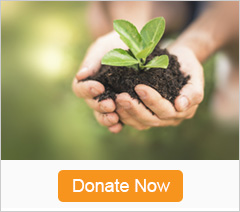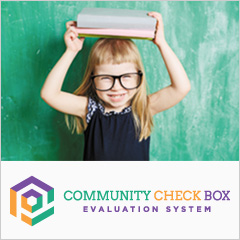

The Tool Box needs your help
to remain available.
Your contribution can help change lives.
Donate now.

Seeking supports for evaluation?
Learn more.
| Learn who is affected by the problem, who can help to improve the problem, and discovering what they can do to assist your organization. |
When doing work in your community, the first thing to decide is what is the issue or problem you want to address. Whether you are teaching kids to read or trying to create safer neighborhoods, it's your group's reason for being; it's what you're all about.
You and your organization are not alone. There are people out there who can benefit and people who can help. That is, there are people to whom your initiative has things to offer and people from whom you can learn and get assistance. We need to be clear about who should benefit--youth and parents, for example--and people who can help address the issue or problem--including youth, parents and guardians, teachers, service providers, and others. Knowing who these people are is an important step.
In this section, we'll help you decide who your organization or initiative is trying to reach -- targets of change -- and who can help you reach them -- agents of change. We'll also consider what it is that these "agents of change" can do, and how you can develop a plan to make sure you have found everyone who can benefit and everyone who can help, and not just the most obvious candidates.
Sounds simple, doesn't it? It is. It's just a question of being clear, complete, and making sure you look at every angle.
You're probably trying to change a certain behavior or outcome, such as reducing drug abuse or creating decent jobs. Sometimes, the particular behavior you are changing is clear; other times, the root cause of a given problem or issue is less obvious. Children falling asleep in class, for example, might actually be a direct result of their not having had breakfast, and isn't really a result of any problem in the school itself. Not having enough to eat, in turn, may have less to do with parental neglect, than with the family living in poverty due to inadequate job opportunities. We interview people who experience the problem to gain a better understanding of what conditions and behaviors contribute to the problem or issue.
Like finding the root problem, understanding who you want to target for change can be relatively simple or more difficult.
Generally, targets of change will fall into two categories:
Deciding who is directly at risk is usually the easy part. If you are trying to increase immunization among inner city children under two years of age, for example, those children (and their parents or guardians and health providers) may be the targets of change. Intravenous drug users (the ones that use syringes) are among the key targets of an AIDS prevention effort, since they are at higher risk for contracting the AIDS virus.
Sometimes, however, the people at risk aren't the same ones you will target for change. It may be that because of some reason, such as age in the immunization example above, the people at risk are not the ones whose behavior you will try to change. Since children under two years of age can't immunize themselves, the targets of change include parents and guardians and health providers. In this case, your targets of change will be those people whose actions (or lack of actions) contribute to the problem.
Examples of these people include:
As you work on an initiative, you will want to consider both categories, targets and agents of change. Sometimes, an initiative might be designed to work with both those people who experience or are at risk for the problem, as well as those whose actions (or lack of actions) contribute to the problem.
For example, a community initiative to improve public transportation might use:
Next, you'll want to look at potential agents of change. Who can influence the people and the conditions that contribute to the problem or issue? These are the key individuals or groups who, if they put forth an effort, can help address the issues that matter to your community.
Sometimes, agents of change can be members of the same group as the targets of change you identified earlier. You might concentrate part of your "Healthy Eating" campaign on high school science and health teachers, for example, so that they, in turn, will pass on nutrition information to their students. In this instance, the teachers are the people whose behavior you are trying to change and also the people who can help make improvement happen. Similarly, gang members may be in a position to contribute to reductions in gang-related violence; peers, in a position to influence academic achievement of other youth; and people who have experienced trauma or loss, in a position to help others with similar experiences cope with the effects.
Remember that the success of the change agent is directly related to his or her effort in connecting with the targets. Ideally, people experiencing (or at risk for) the concern are deeply engaged as agents of change. Success happens when people get together, spend time together, care about each other, and are important parts of each other's efforts to make a difference. Teachers will be better agents of change if they have the support of parents, just as parents will be successful agents of change if their efforts are coupled with the efforts of teachers.
The agent of change can influence others in a variety of ways. If they are working with someone who is directly affected by the problem, they will probably do the following:
So, the next question is: How can you identify everyone who can benefit and help? A first step is to answer the following questions. Just for your use, you might want to grab a piece of paper and scribble down your answers. Often times, the act of writing something works as a brainstorming technique, and you'll come up with more ideas than you thought possible! You might do this with other members of your group, and with other groups; the more help you get, the better your ideas will be.
Now, you're ready to decide who your targets and agents of change really are. As you did before, write down and brainstorm answers to the following questions. When you're done, you can pick out the best answers and presto! Your list of targets and agents of change is complete.
Identifying targets and agents of change is an important step in your planning process. It helps put the work in context, and reminds you of your part in the greater whole. In doing this, you'll be sure that you are doing what you set out to do--and you're doing so for everyone who can benefit and contribute.